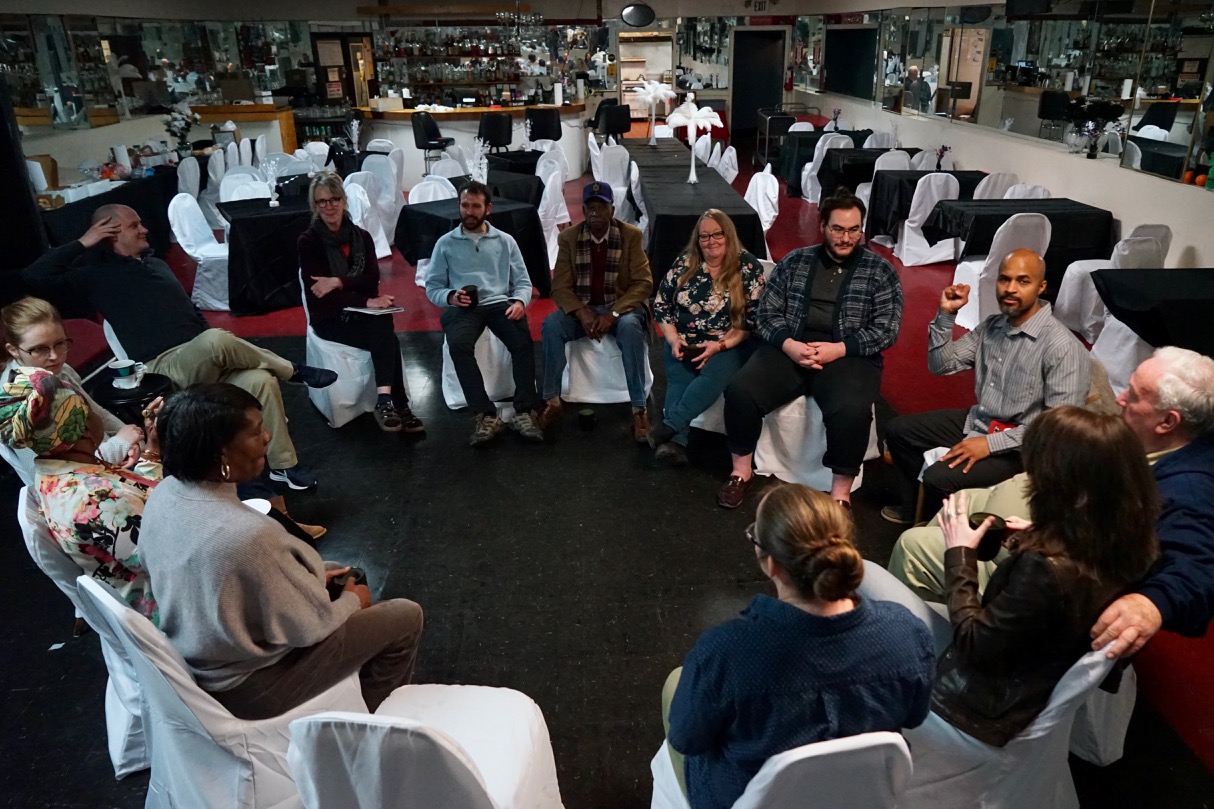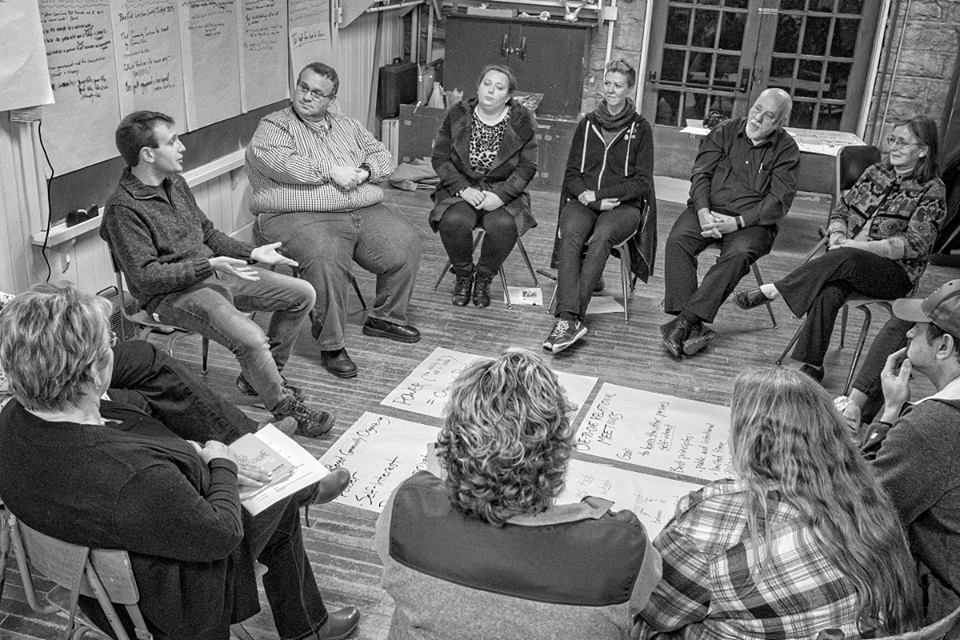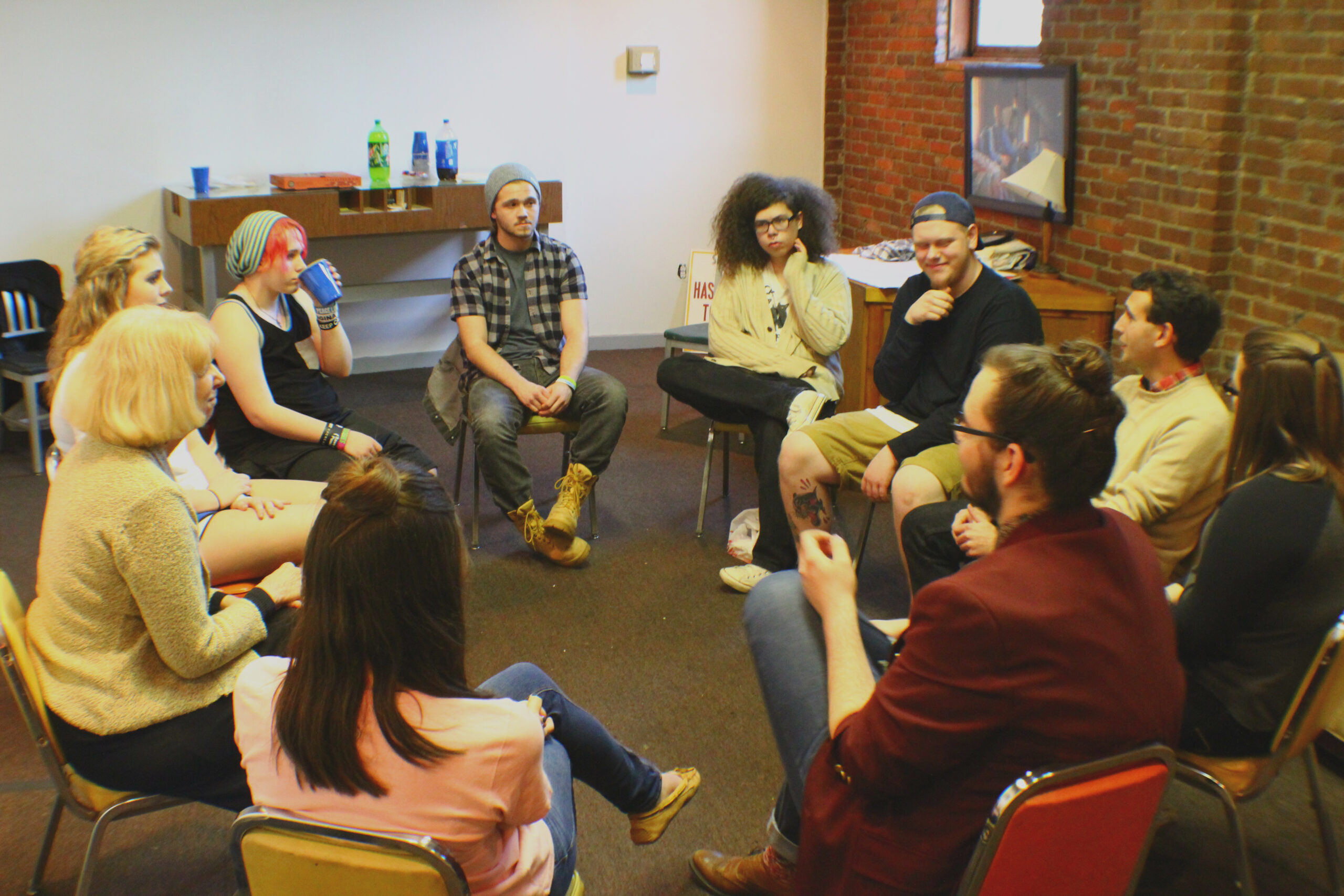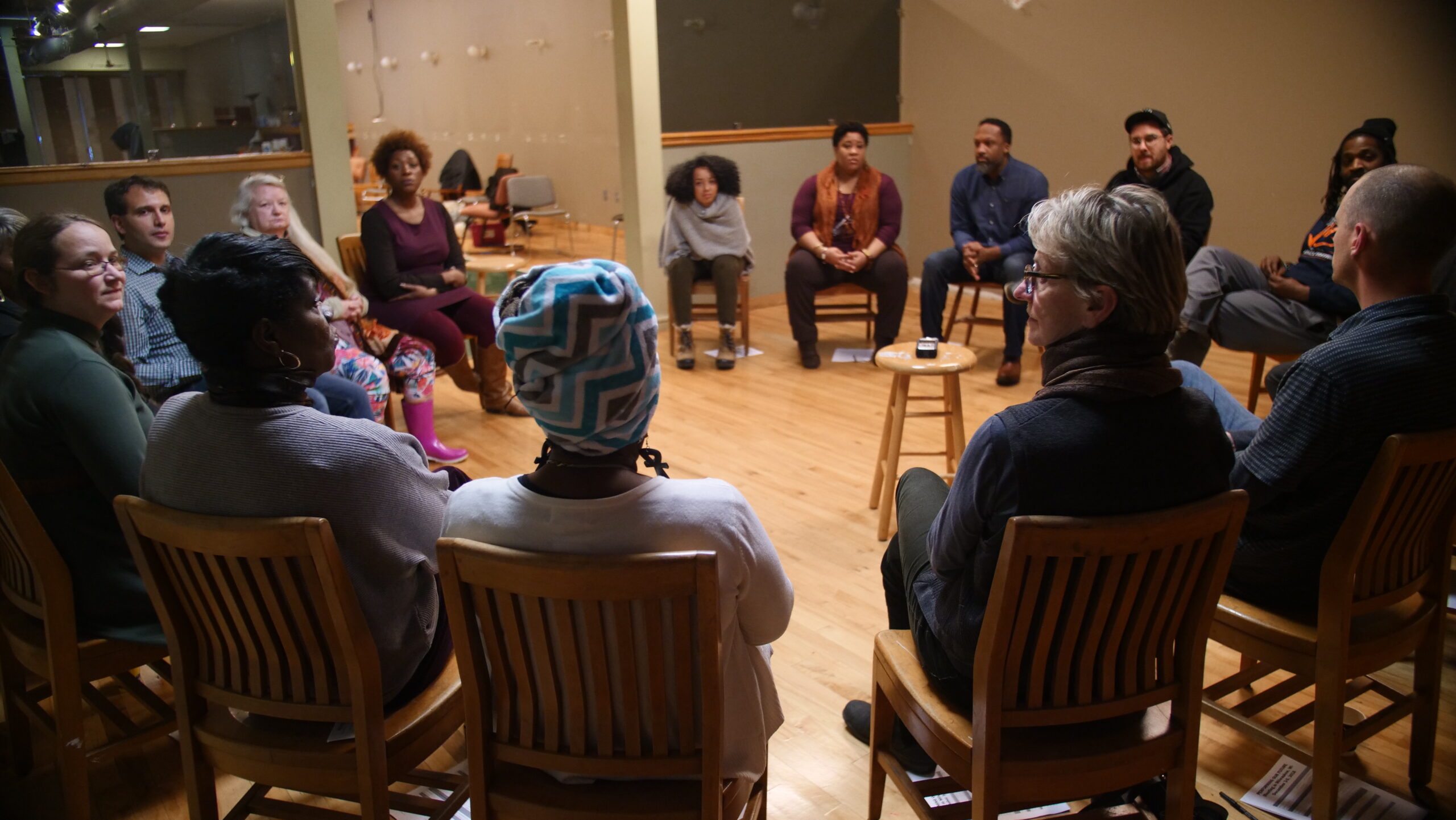“It sounds like unity without bullshit.”
For a half hour I had been trying to explain to a group of academics the unique importance and value of story circles, when a grad student interrupted me and nailed it.
Lately there’s been a lot of talk about the need for unity: “bridging divides,” “working together across differences,” “ending toxic polarization,” and so on. Which makes sense, given the growing malignant mass of well-funded interests dedicated to convincing us that we — our communities, our country, our world—are hopelessly divided (I’ve written more about this in my newsletter). Still, a lot of this talk can feel like, well, bullshit: preachy elites telling us to give up our deepest-held values or make nice with people who may well want us dead.
Story circles are different. They weren’t invented by think tanks or foundations, but by grassroots theater makers: the African American Junebug Productions, with roots in the Civil Rights movement, and the Appalachian Roadside Theater, with strong ties to labor organizing in the coalfields. Story circles aren’t facilitated by credentialed experts, but by regular people. The only qualification for running a story circle is having been in one.
Nor does anyone have to compromise on who they are and what they believe in a story circle. They simply ask that we share our own experiences from our own perspective, listen to others share theirs, and witness the common story that emerges, naturally, in the middle of the circle.

Download a Facilitation Guide
Ready to jump right in to the rules and procedures of a story circle? Check out the facilitation guide.
Learn MoreHow Story Circles Work
Story circles have a lot of rules and procedures—here’s a step-by-step-breakdown—but they’re pretty straightforward:
- Everyone participates; there are no spectators.
- No one joins late or leaves early, except in case of emergency.
- Participants sit as close to each other as possible, with phones off, notebooks put away, nothing on your lap at all.
- One person talks at a time, going around the circle to the left or right, with no interruptions. (Anyone can pass; they’ll get another chance in the next round.)
- Each person shares a personal story, with characters, setting, beginning, middle, and end—and that’s it: no commentary, explanations, opinions, or morals.
- There’s no timer, but people who go past the set time limit (usually 3-5 minutes) get a gentle nudge to finish up.
- And finally (this is important) everyone is asked not to share the story they think of when they hear the initial prompt (more on prompts below), but to listen carefully to the stories that come before theirs, and then to share a story that complements, complicates, contradicts, or otherwise responds to the stories they’ve heard so far.
After the story circle starts, the facilitator talks only to share their own story, when it’s their turn—everyone in the room participates, including the facilitator—and to offer quiet and friendly reminders of the rules, as needed:
- When someone talks for too long: “Please finish up when you can.”
- When someone talks out of turn: “Please wait until it’s your turn to talk.”
- When someone gives generalities or talking points instead of sharing a story: “Is there a story about that you’d like to share?”
These rules and procedures may seem like a lot. But after running story circles for a decade, I can assure you they work. When followed faithfully, they make it possible to create, in a world full of inequalities, a small and precious space where everyone’s voice is equally heard and valued.
In a story circle, people who tend to dominate discussions learn to listen, knowing they’ll have their turn to speak and be heard; and people who tend to hold back find themselves speaking up, knowing that no one will interrupt or talk over them. At the end, when the group reflects together about the stories they’ve just heard, they inevitably discover elements of a “story in the center of the circle”–a story that they find, to their surprise, they all somehow share.

The Results
No one in a story circle is ever pressured to say more than they want to. But given the chance, participants often choose to share deeply, even in story circles in story circles with people they’ve never met before. And they are astounded by how much they learn, even in story circles with in story circles with people they’ve known for years.
Three short stories:
A story circle with wealthy white Massachusetts liberals and working-class white Kentuckians of mixed political views started with the prompt: Tell a personal story of a moment that shaped how you participate in society and ended up revealing how many people from both places had survived violence in their families. This included both political violence (connected to religious persecution and labor exploitation) and domestic violence.
In a story circle with members of a small-town Black church, with the prompt Tell a personal story of a moment when you struggled to take care of yourself, several congregants discovered they weren’t alone in wanting to get fit but feeling ashamed to get started. Then another congregant said she wanted to start an exercise club but didn’t think anyone would join. A new business was born!
A story from Roadside Theater, one of the creators of the story circle: “One night in eastern Mississippi, a white woman in the circle told of a Black woman who took care of her when she was a small child: ‘I loved my nanny, and I was heartbroken when she suddenly stopped coming to my house.” Crying, she continued: ‘Throughout my childhood, I feared that I had done something wrong and she had abandoned me.’ As we continued around the circle, a Black man told a story about his mother: ‘My mother spent six days and six nights every week taking care of a white child so we could have a roof over our heads and food on the table.’ By the end of the evening, they discovered they were talking about the same person, that his mother was her nanny. He said, ‘For so many years I hated this child I had never met, because she took my mother away from me. Now I see that this situation harmed her, too.’”

Planning a Story Circle
The first question to ask when planning a story circle is: What’s the goal? If the story circle is successful, where will the group be at the end of it? The most effective story circles—including the three described above—are not one-off events but key moments of reflection during a process of pursuing common goals together.
Then, the second question: What’s the prompt? What do we want to ask participants to share stories about, that will point them in the direction of that goal? Effective prompts usually start with “Tell a personal story about a moment when…” and stay as short and simple as possible. Make sure that (1) everyone can relate to the prompt, however they may want to interpret it; and (2) all participants are prompted to see themselves as having a say in their lives (something they did), as opposed to being victims (something that happened to them).
After that, just follow the steps in the guide. Don’t worry if it feels a little awkward the first few times. Running a story circle is a craft, and like all crafts, it’ll feel better as you gain experience and develop your own style. And when you get doubtful or discouraged, remember that people everywhere are craving the chance to tell their stories, to connect with others, to listen and be heard, and to experience unity without bullshit. You get to give them that chance.
Additional Resources
- Story circle facilitation guide (printable)
- Story circle discussion paper, by one of its creators
- Story circle background information, by another of its creators
- Principles for building diverse community organizations, including the role of story circles
For Further Reading
- We Are Not Hopelessly Divided, from Ben Fink’s newsletter
- More information on Junebug Productions and Roadside Theater
- More storytelling and organizing tools, from the website of a two-volume book series about Roadside Theater
